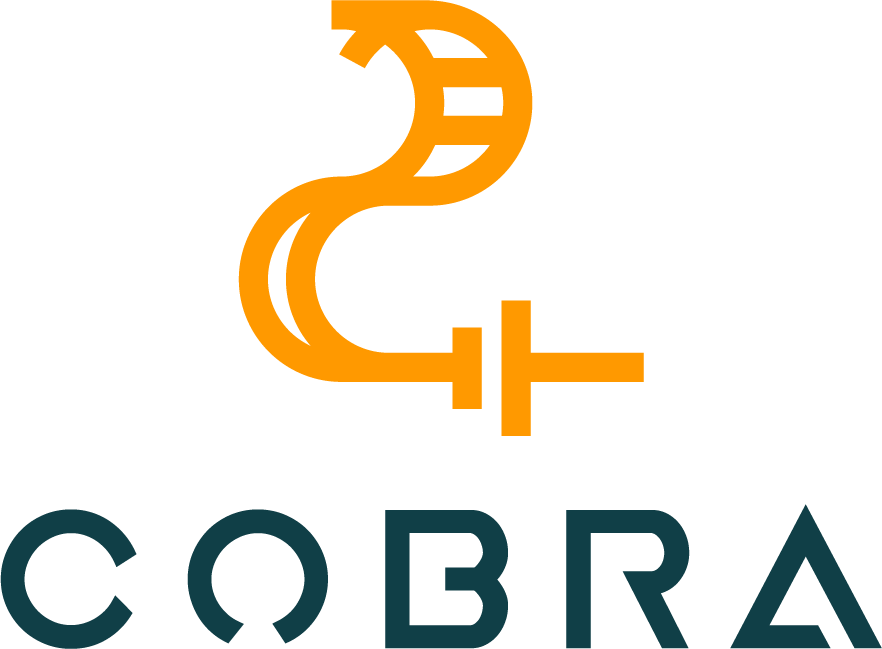The goal is to fulfil Europe’s need for a safe, high-energy, sustainable and marketable battery for green mobility that could be manufactured in Europe on a massive scale. To do so, the new ASTRABAT cells will enable:
ASTRABAT is part of a broader drive by the European Union to make electric mobility become the next transport mode and contribute to the EU overall goal to reduce greenhouse gas (GHG) emissions by 80-95% by 2050 (currently, the transport sector is responsible for around one quarter of Europe’s GHG emissions). It is expected that e-mobility will represent 70% of the total rechargeable Li-ion battery cell market’s value in 2022 and that 70% of the EU electricity should be produced by renewable energies. Hence, the electric battery storage is vital in this transition to clean mobility and clean energy systems.
Our innovation
This video presents how ASTRABAT is innovating in solid-state lithium-ion batteries using the latest generation of materials.
Technology
Li-ion batteries for electric vehicles suffer from several issues:
- Insufficient energy density to comply with expected electric vehicle autonomy of 500 km;
- Hazardous in safety due to strong battery thermal run away;
- Unsatisfactory power density to meet fast charge requirement;
- Lack of battery Giga-factories in Europe.
To overcome these issues, ASTRABAT will:
- Develop materials for a solid hybrid electrolyte and electrodes enabling high energy, high voltage and reliable all-solid-state Li-ion cells;
- Adapt the development of new all-solid-state batteries to a conventional process adopted for manufacturing electrodes in Li-ion cells;
- Design an all-solid-state-battery architecture for the next generation of 2030 Li-ion batteries;
- Define an efficient cell architecture to comply with improved safety demands;
- Generate a new value chain of all-solid-state batteries, including eco-design, end of life and recycling.
How will ASTRABAT go beyond the state of art of solid-state electrolytes?
ASTRABAT hybrid electrolyte will be based on polymers (ORMOCER® and fluorocarbon polymers) and an inorganic filler and membrane (LLZO). These materials will tackle the generation 4a of cells using high voltage cathode materials, based on Nickel Manganese Cobalt Oxide (NMC) such as NMC622 and NMC811, and Si-based anode. All developed cells will be assessed following standard safety protocols and safety certifications will be performed.
For the ceramic LLZO material, an ionic conductivity of 0.4 mS/cm in the range temperature of 10°C – 50°C will be achieved via Al-doping or Ta-doping. This should enable a decrease of the cell operating temperature and render a more efficient electric vehicle. Moreover, an optimised ionic transport will be achieved by tailoring electrode-electrolyte percolation networks to reduce the ionic pathway length. This will be done by optimising the electrode formulation and by developing new processes to generate organised electrolyte structures.

The improved impedance of the electrode-electrolyte interface will be achieved by developing an inorganic coating on NMC material, organic coating on LLZO and carbon coating on silicon. Different particle sizes of active electrode materials will be synthesised and will contribute to a better harmonisation of the material.
Short cycle life will be avoided thanks to material coatings on NMC that will reduce the capacity fading generated by interfacial reactivity of electrode material with the electrolyte. At the anode side, the Si particle size and carbon coating are also a source of improvement of electrode stability and reduction of irreversibility by solid electrolyte interface formation.
Check out this table to discover the expected KPIs of the ASTRABAT cell!
Fellow projects
International agreements towards less air pollution and CO2 production, such as the Paris Agreement (COP21), and the European Union 2020 and 2050 targets, are pushing towards a rapid implementation of electrification of transport. Electric batteries are currently seen as key technological enablers to allow a rapid growth of the sales and deployment of battery electric vehicles. A battery technology with higher driving range, lower charging time, increased safety, increased sustainability and low-cost manufacturing will accelerate the market introduction of electric vehicles in the world. This understanding is framed by initiatives such as Batteries Europe, the European Battery Alliance, Battery 2030+, and, on a global level, the World Economic Forum’s Global Battery Alliance.
Considering the global competition, the European Union is focusing substantial research efforts to create an improved European battery technology. Under the EU Research and Innovation programme Horizon 2020, numerous calls for proposals focus on different aspects of battery research. One of these is the LC-BAT-1-2019 call, which addresses the global interest on solid state batteries as an alternative to ensure higher performance, but also inherently safe batteries.
In addition to ASTRABAT, three projects have been funded by the European Union to work under the LC-BAT-1-2019 call. Read their description below and follow our updates on social media with the hashtag #LCBAT12019. Moreover, ASTRABAT is also collaborating with COBRA, funded under the LC-BAT-5-2019 call.

SUBLIME
SUBLIME proposes the usage of high capacity and high voltage electrode materials. The battery will be inherently safe and will be able to operate at room temperature or lower; thus, facilitating the start of the vehicle in broad operating conditions.
Interfaces showing a fast Li-ion transport will be developed in the project and partners will focus on developing intimate and (electro)-chemically stable interfaces with strong mechanical properties. The interfaces will be specifically designed to increase stability of the component and the malleable nature of the sulfide enables good interfacial contact.
SUBLIME will bring the sulfide electrolyte solid-state battery technology to TRL 6. The scale-up to pre-industrial volume will ensure that results are, indeed, scalable to large-volume commercial manufacturing. SUBLIME will deliver a roadmap to 2030, enabling eventual market entry by a very strong constellation of European partners.

SOLiDIFY
The SOLiDIFY project proposes a unique manufacturing process and solid-electrolyte material to fabricate Lithium-metal solid-state batteries – known as Gen. 4b on the EU battery roadmap.
The concept is based on a solid nanocomposite electrolyte or nano-SCE. It is made by a sol-gel reaction which is used advantageously for a liquid-tosolid approach in the fabrication of the composite cathode and the solid-electrolyte separator. The general strategy to reach the target energy density of 1200Wh/L (400Wh/kg) in 20 minutes charging time is: (1) enabling the integration of high-energy NMC active materials and (2) development of new electrode architectures for high mass loading and enabled by the liquid-to-solid approach. An added imposed challenge is a water-based cell assembly process. To this end, suitable protection of the high-energy NMC powder with ALD thin-film coatings is pursued. Finally, thin lithium foils with protective artificial interphase coatings will be developed for lamination on the nano-SCE separator.
The main goal of SOLiDIFY is to bring the liquid-processed solid-state cell fabrication concept from demonstration in the lab (TRL3) to demonstration of prototypes in pilot line (TRL6), with upscaling of the concept both towards (1) the development of manufacturable materials and processes and (2) the discovery of full cell assembly schemes with ultimate demonstration of 1Ah pouch cells. The material research will focus on (1) solutions enabling the upscaling process and manufacturability and (2) further improvement of cell integration steps to enhance performance.
Manufacturable parameters such cost, environmental impact and recycling will also be handled. The larger scope of the SOLiDIFY project entails the development of a novel and potentially European-lead solid-state battery technology with fully covered EU value chain.

SAFELiMOVE
SAFELiMOVE aims to support a change towards safe high energy density batteries for the electric vehicle by the development of:
- High specific capacity, lithium metal anode materials.
- High voltage and high capacity layered oxide cathode materials development, having the advantage of an intrinsic high voltage.
- Advanced solid electrolyte with improved ion conductivity at room temperature, replacing the liquid electrolyte and enhancing the intrinsic safety => fewer external safety features required => lower costs of module, pack structures.
- Knowhow for the development of scale up production of all-solid-state batteries.
The project is run by a consortium of 15 partners from 7 European countries led by CIC energiGUNE.

COBRA
The COBRA project, funded under the LC-BAT-5-2019 call, aims to develop a novel cobalt-free Li-ion battery technology that overcomes many of the current shortcomings facing electrical vehicle (EV) batteries, by enhancing each component of the battery system in a holistic manner.
The project will result in a unique battery system that merges several sought after features, including superior energy density, low cost, increased cycles, and reduced critical materials. The proposed Li-ion battery technology will be demonstrated at TRL6 (battery pack) and validated on an automotive EV testbed.
The involvement of several leading battery manufacturing organisations ensures easy adaptation to production lines and scale-up to contribute to a higher market adoption while strengthening Europe’s position in the field.
The consortium includes 3 universities, 7 RTOs, 4 SMEs and 5 enterprises covering the entire value chain.
Media kit
Discover and download the ASTRABAT graphic materials.
ASTRABAT Brandbook
15 May 2020 - PDF - 697.29 KBGuidelines on the correct use of the ASTRABAT visual elements (fonts, colours, logos...).
ASTRABAT logos
15 May 2020 - ZIP - 12.49 MBAll versions of the ASTRABAT logo in both the digital and printable formats.
ASTRABAT flyer
08 Jul 2020 - PDF - 1.48 MBA quick introduction to ASTRABAT.
ASTRABAT roll-up poster
20 Jul 2020 - PDF - 4.29 MBCheck out the official roll up poster of ASTRABAT.
